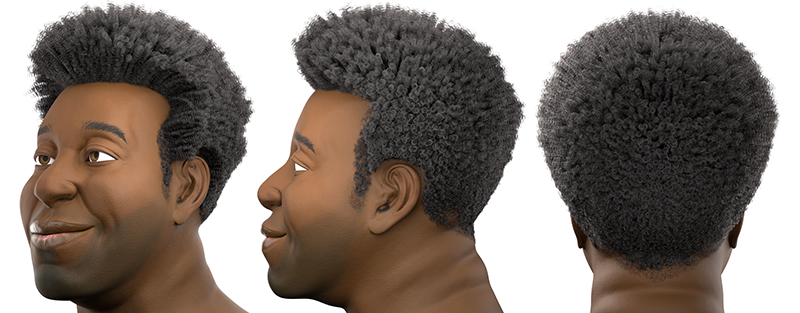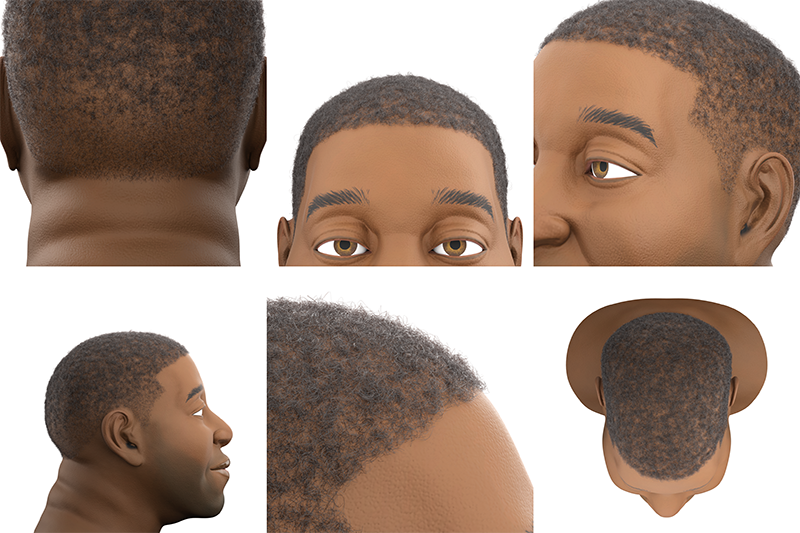Fast, private email that's just for you. Try Fastmail free for up to 30 days.
Curly-Cue, an Algorithmic Method for Modeling ‘Highly Coiled’ AKA ‘Black, Afro-Textured’ Hair Using Computer Graphics, to Be Presented at SIGGRAPH

Yale Engineering, on the publication of a “landmark study in hair animation”:
We have grown accustomed to seeing many aspects of our everyday world depicted using computer graphics, but some phenomena remain difficult for even the most experienced animators. Hair, specifically the highly coiled hair that is most common to Black characters, remains a notoriously difficult digital challenge.
Part of this problem is the lack of algorithms. Scores of technical papers have been written over the last few decades proposing algorithms for hair, but they have focused on the features most closely associated with white characters: straight or wavy hair. The number of papers written for highly coiled hair (a.k.a. Black hair) is virtually zero.
Theodore Kim, the Yale Professor who led this study, announcing the paper on Mastodon:
There has NEVER been [a] paper at #SIGGRAPH on Black, Afro-textured hair in its entire 50 year history. UNTIL NOW.
I’m shocked but not surprised to learn this is the first such paper presented at the premiere computer graphics conference.
The challenge with modeling “highly coiled hair” is that it doesn’t behave like straight hair, just with more coiling. Kim and his team identified
[…] three geometric phenomena unique to highly coiled hair: phase locking, switchbacks, and period skipping.
These phenomena do NOT appear in straight hair, and thus have been ignored at #SIGGRAPH, and CGI in general, for half a century.
These will be familiar to anyone with “Black hair” (or who has Black friends): strands that coil together; kinked strands that stick out; and flyaways and “bushiness”.

I read the abstract (which is very approachable—the videos and images help) and the paper, though I won’t pretend to fully understand the math and science presented. I grokked enough to be fascinated that my hairstyle, with all its kinks, twists, and coils could be accurately represented by a series of (complex) mathematical formulae.
Lends credence to the idea we’re living in a computer simulation and we’re figuring out how it works.

